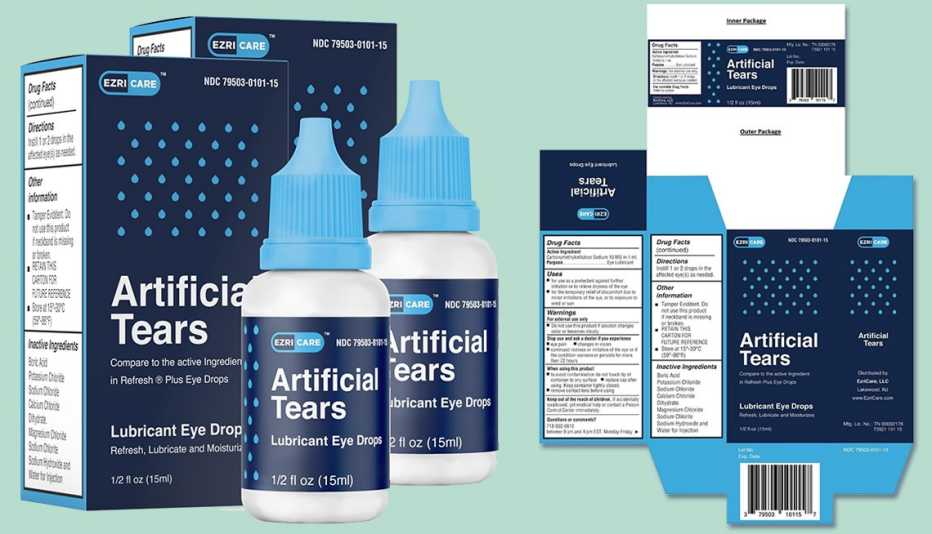AARP Hearing Center


Amid an investigation into bacterial infections associated with the recalled EzriCare Artificial Tears eyedrops, 13 new cases have emerged across two additional states. Among 81 documented infections, 14 resulted in vision loss, eight required eye removal surgery, and four people died, according to data released by the Centers for Disease Control and Prevention (CDC).
The type of infection linked to the drops, Pseudomonas aeruginosa, is resistant to antibiotics and poses a greater threat to those whose immune systems are compromised. CDC testing determined the bacteria in the recalled products was resistant to antibiotics such as carbapenem, ceftazidime and cefepime.
Although most infections were linked to the EzriCare brand of eye drops, patients with infections reported using more than 10 brands of artificial tears. These brands were not named.
Though preservative-free drops are recommended for people who apply artificial tears more than four times a day or have moderate to severe dry eyes, they are more likely to support bacterial growth after the bottle is opened, according to the Mayo Clinic.
Infections were first reported in California, Colorado, Connecticut, Florida, Illinois, North Carolina, New Jersey, New Mexico, Nevada, New York, Pennsylvania, South Dakota, Texas, Utah, Washington and Wisconsin. More recent infections have appeared in Delaware and Ohio.
Of the seven infections that were collected after the recall was announced, most patients either resided in long-term care facilities with other known cases or reported using the recalled artificial tears.
The manufacturer, Global Pharma Healthcare, based in India, recalled EzraCare Artificial Tears and another product, Delsam Pharma’s Artificial Tears, at the recommendation of the Food and Drug Administration (FDA).
The agency placed an import alert on the company, blocking its products from entering the U.S., citing poor manufacturing practices and lack of appropriate testing and packaging, according to a statement.
Consumers are advised to stop using EzriCare Artificial Tears and seek medical care if they have signs of an eye infection. The CDC says symptoms include:
- Discharge from the eye
- Pain or discomfort
- Redness
- Sensitivity to light
- Blurry vision
- A feeling like something is in the eye
Editor's note: This story, published Feb. 1, 2023, has been updated to reflect new information.



































































More on Eye Health
6 Best Vitamins for Eye Health
Find out which nutrients are essential for protecting vision
3 Warning Signs of Macular Degeneration
Plus, tips that may help stop the disease from progressing
6 Eye Symptoms You Should Never Ignore
In many cases, catching a problem early could help save your vision